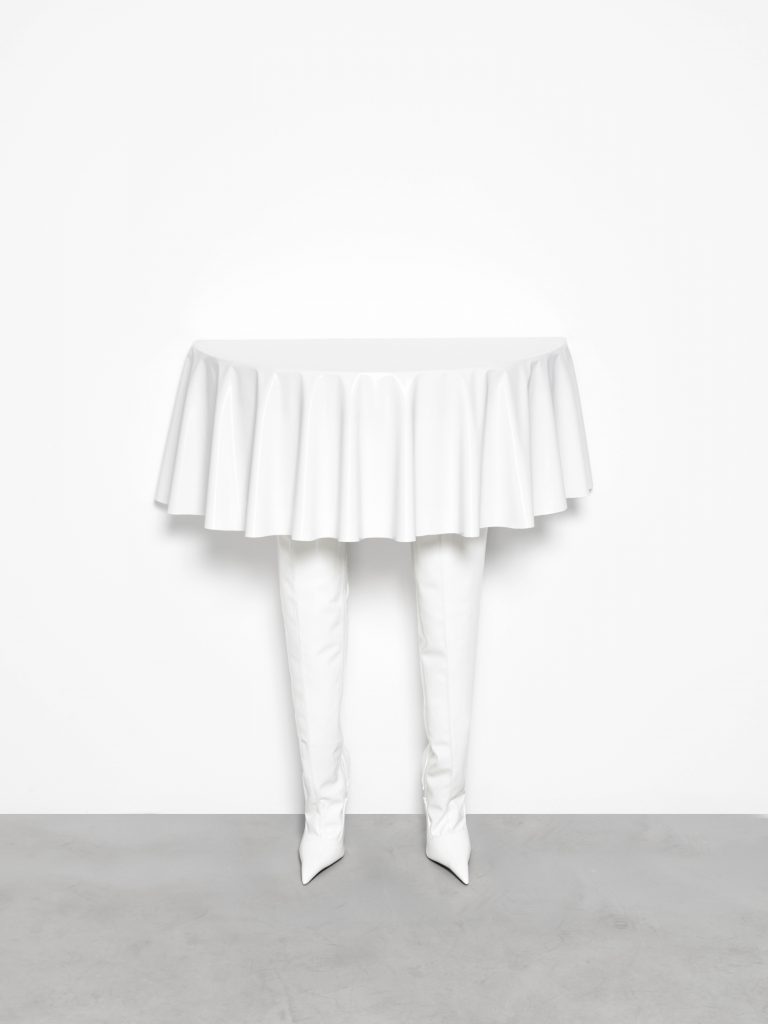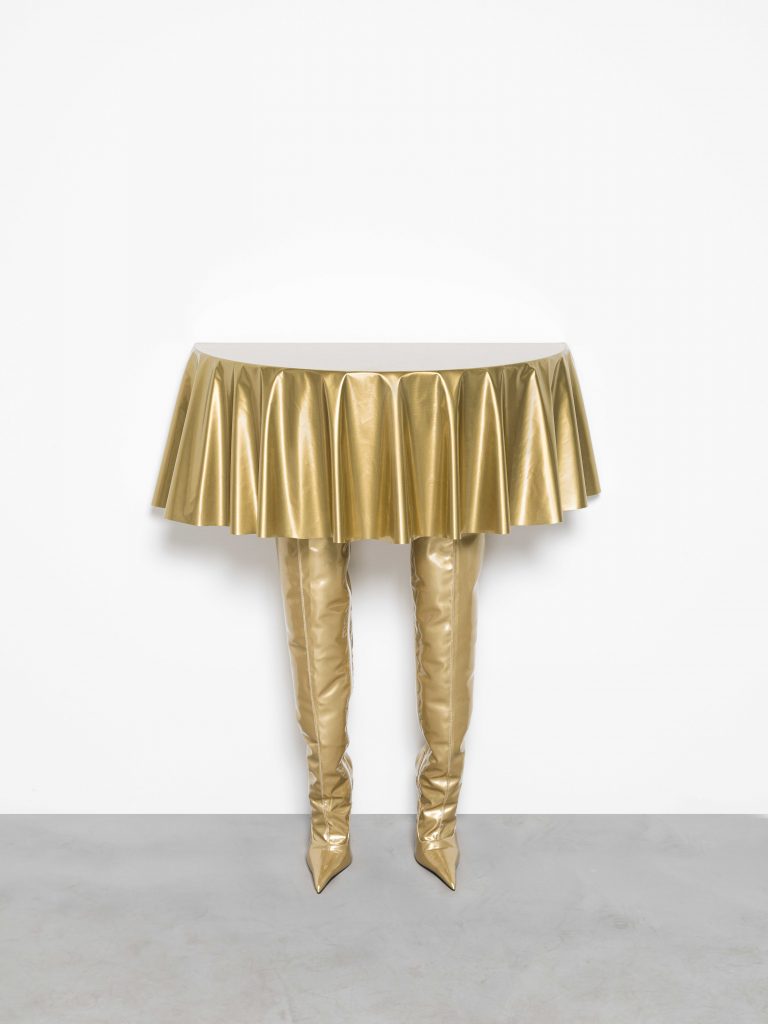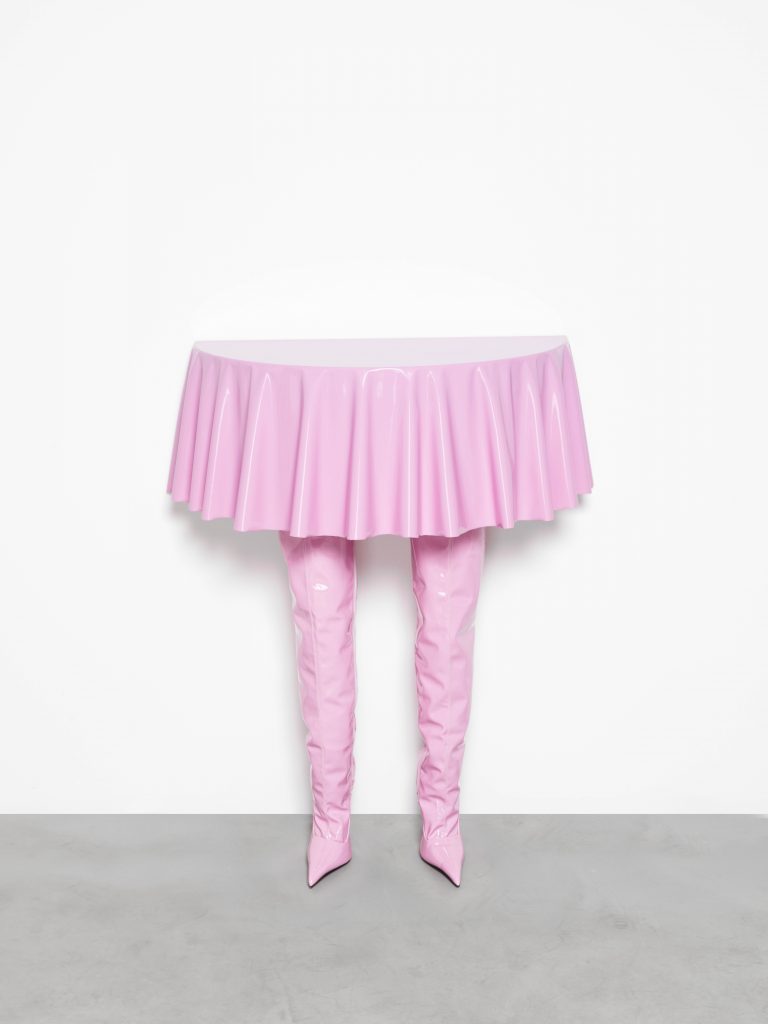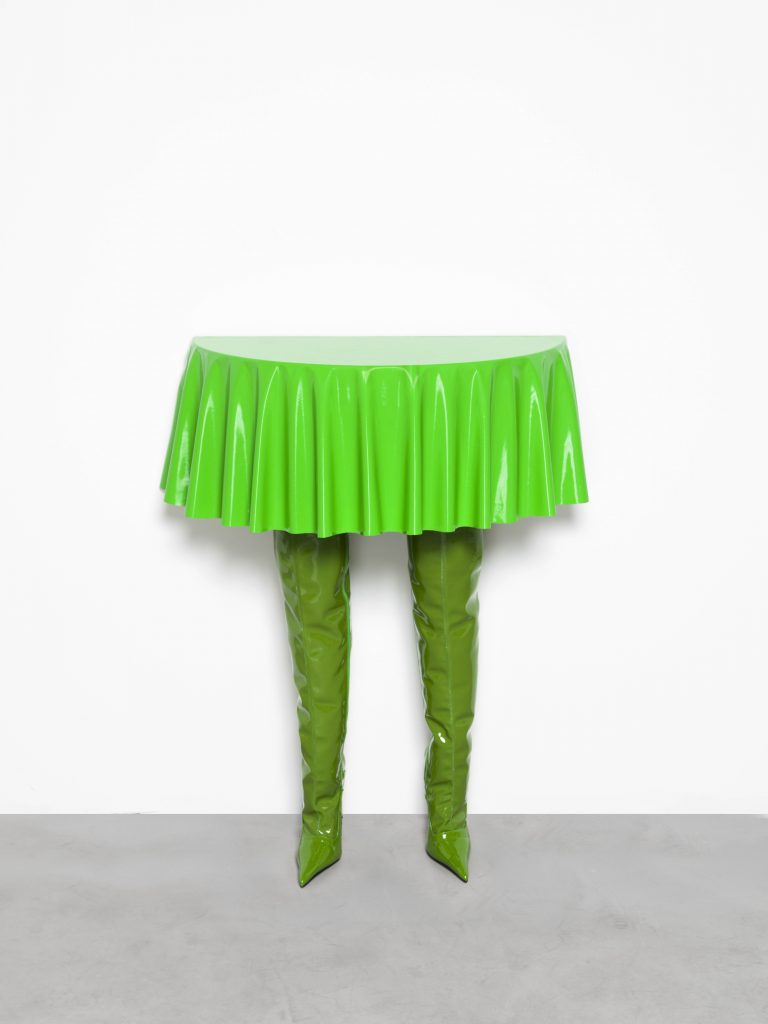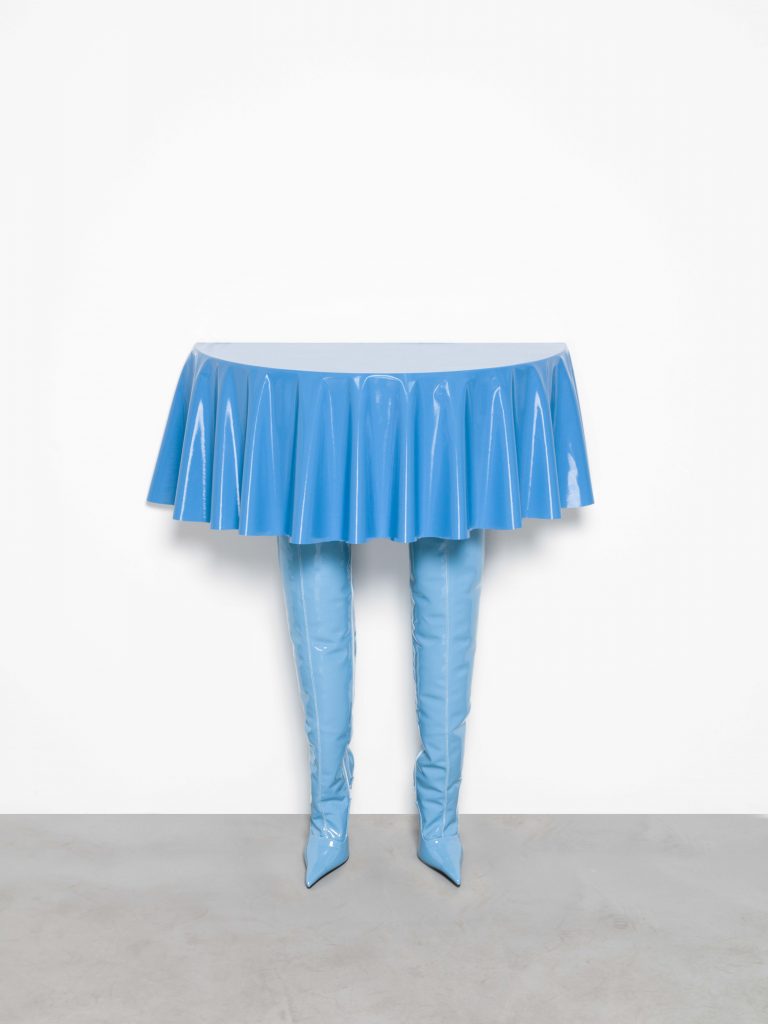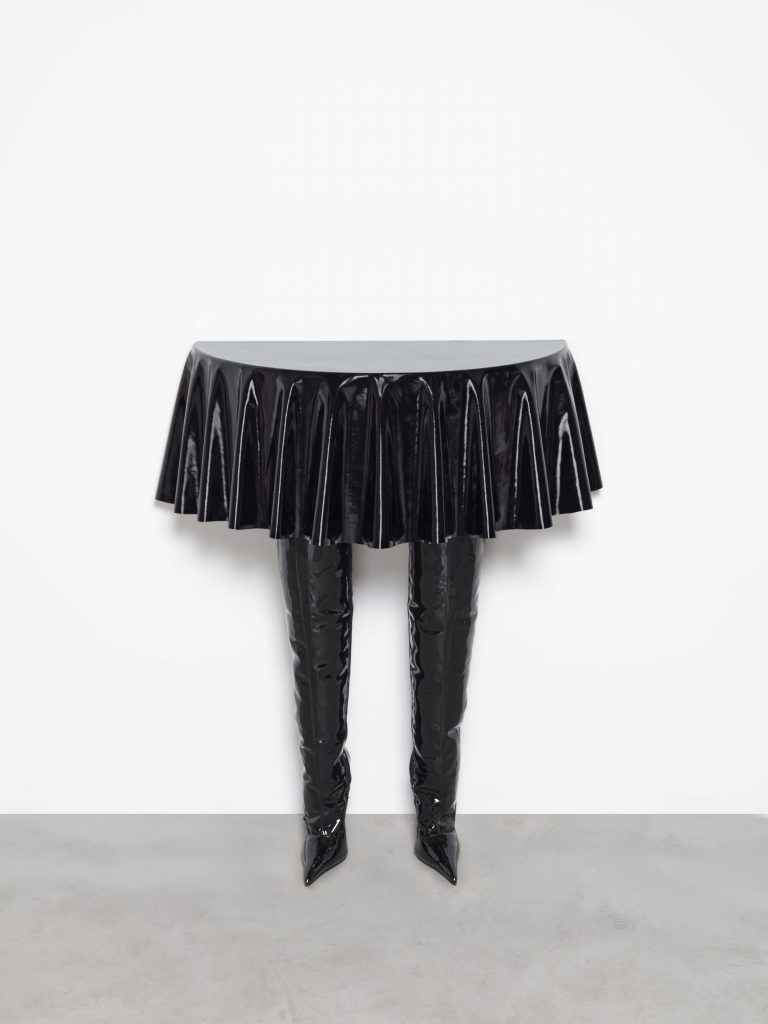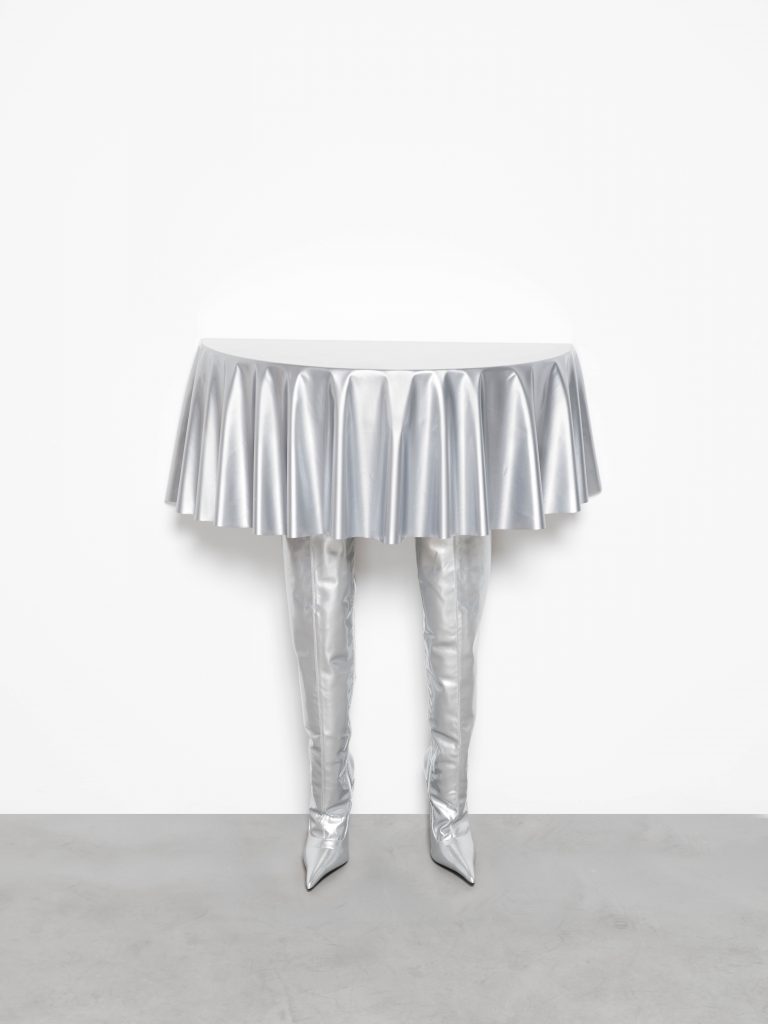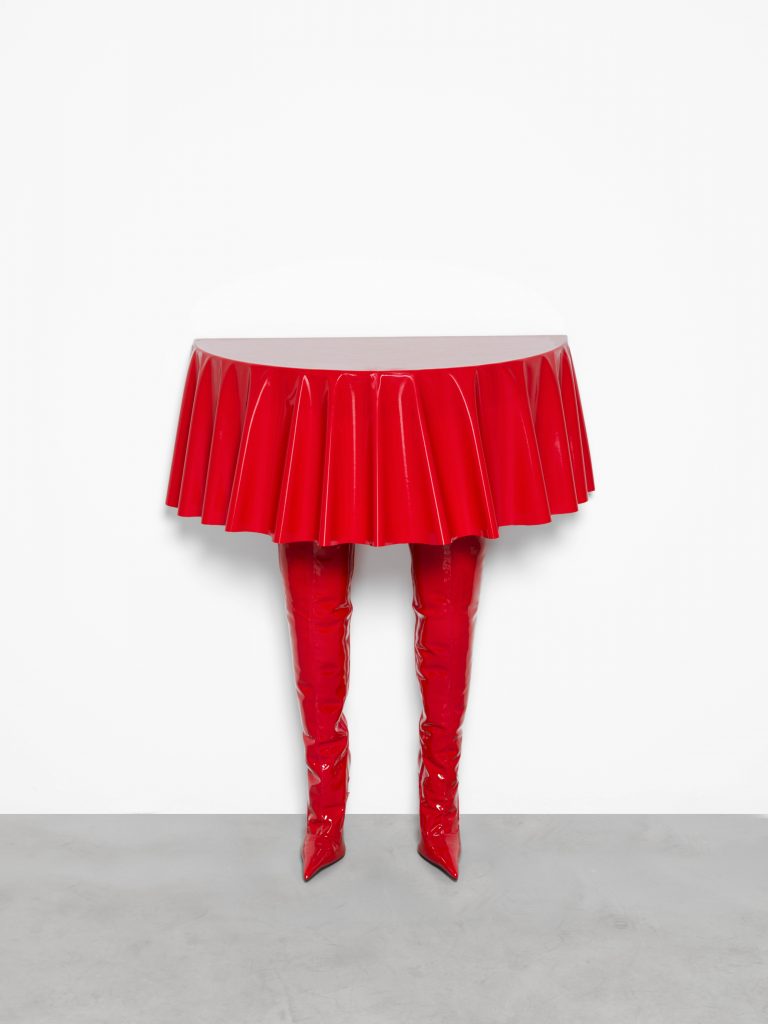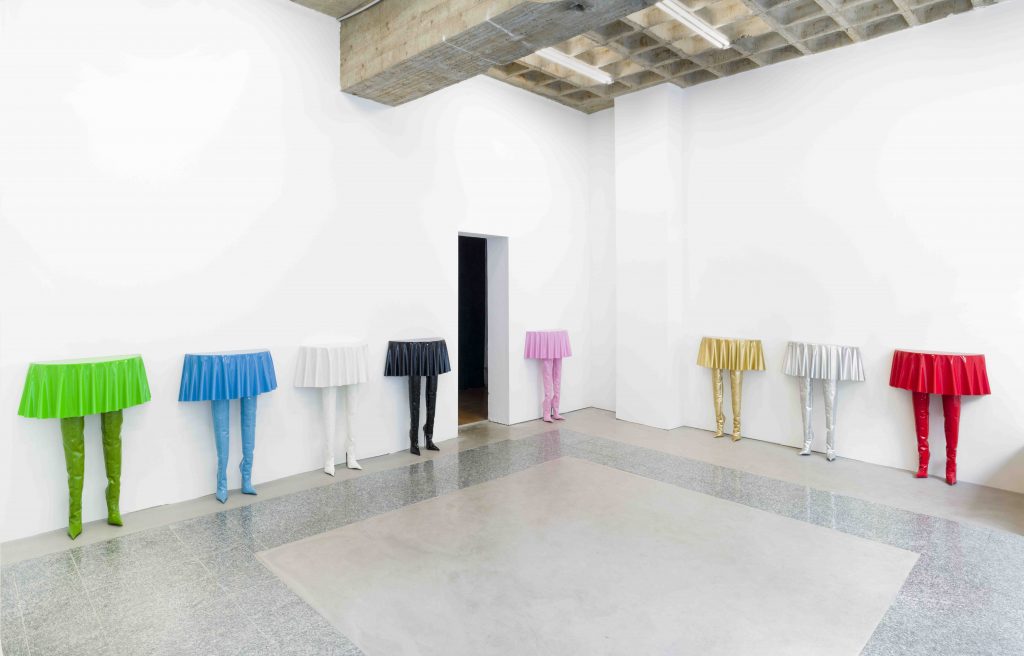
DOMINATRIX, a presentation of tables by the Danish, Berlin-based artist and designer Filip Berg. With a flamboyant touch and distinctively irreverent approach, Berg’s object-oriented practice touches on furniture-making, creative direction, merchandise, sculpture, and set design in a multi-faceted analysis of contemporary object culture.
The presentation extends Berg’s ongoing research project Turning Tables, an ever-growing collection of object prototypes that examines the table as a social object. With a camp sensibility, Turning Tables peruses the history of human civilization in the search of tables and their surprisingly symbolic importance: ubiquitous but always peculiar objects that continuously assert, negotiate, and subvert social dynamics.
At Prince11, Berg presents 8 editions of his table typology DOMINATRIX, where the legs of tables are replaced with brightly-colored high-heeled latex boots. While evoking the visual idiom of postmodernist furniture design, the DOMINATRIX series reflects on numerous visual metaphors around strength and power, most vividly the phenomenon of “paw feet:” ornamental animal-like table feet, a phenomenon that was popularized in 17th-century Europe. Deemed desirable for its elegant curvature, paw feet also allowed furniture to assume the symbolic qualities vested in certain animals, such as lions (majesty, strength, courage, justice). As a relic of a bygone trend, paw feet are remarkable for overtly playing with animistic metaphors in design.
The high-heeled latex boot connotes a very different kind of power, one vested not in nature but in the shifting status of gender in industrial society. While the heeled shoe first appeared amongst horseback soldiers in 10th-century Persia (later echoed in the classic cowboy boot), the stiletto itself was an engineering innovation of the 1950s, as wooden stems were replaced by a metal shaft embedded into the heel, proliferating a new shoe trend across the Western fashion world, accruing hyper-sexualized connotations in the process. The high heel, of course, holds a wider iconic symbolism: in Cinderella, the shoe that fits marks a transformation from girl to woman and proletarian to princess; in Wizard of Oz, Dorothy’s red shoes lead the way to an autonomous life with her chosen family of queers. Originally a trend amongst the peasants of 16th-century Europe, The Sun King of France was forced to dramatically exaggerate the dimensions of heels as he introduced them to the court, so as to literally “raise” the aristocracy from the lower classes, who, in turn, were banned from wearing them.
Presented in latex, a quintessential “plastic” material that nonetheless derives from the natural rubber of trees, these high-heeled objects highlight the enduring quality of some of furniture design’s most ancient semiotic tropes. Playing with the cultural figure of the dominatrix, and the culture-wide fetishization of feet, Berg employs camp—its championing of the anti-serious, the frivolous, the ironic—to playfully urge audiences (and table users) to reflect on the dynamics of “elevation;” and suggests how tables can be turned once again by way of the high heel. If boots are made for walking, where would stilettos run?
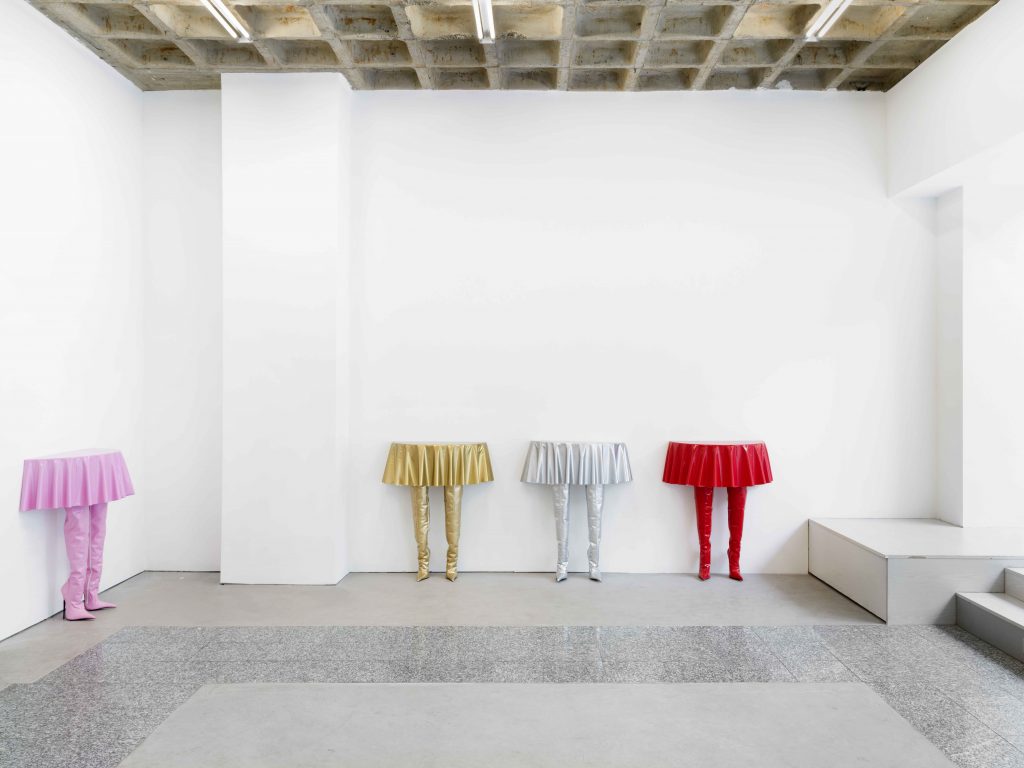
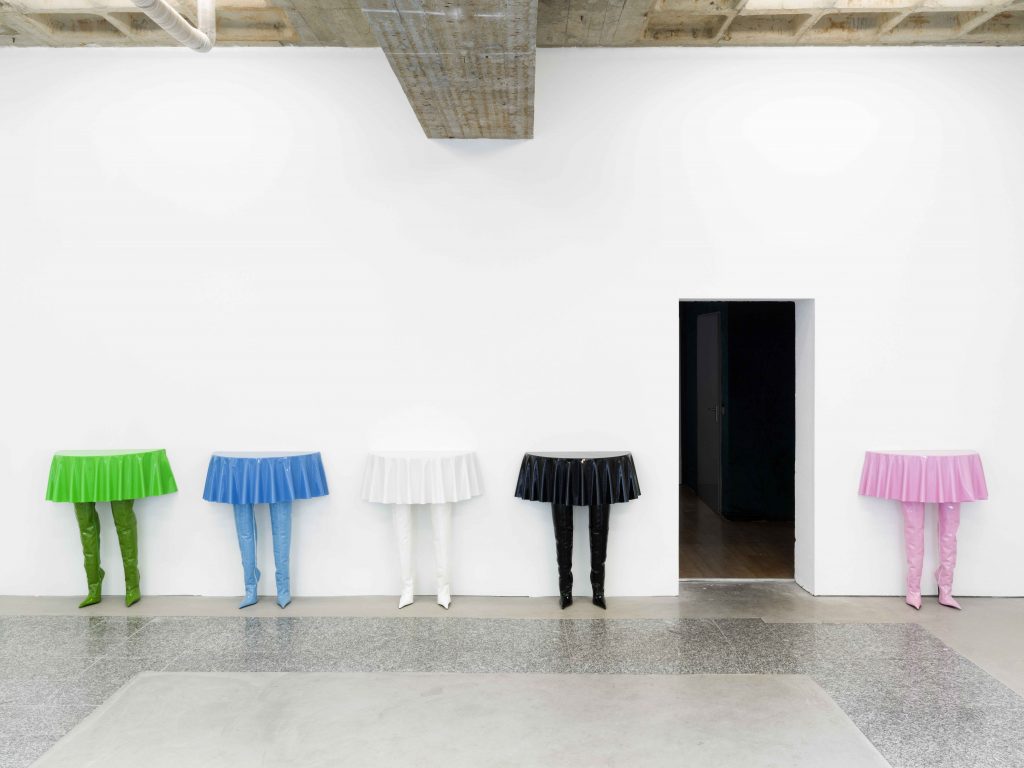
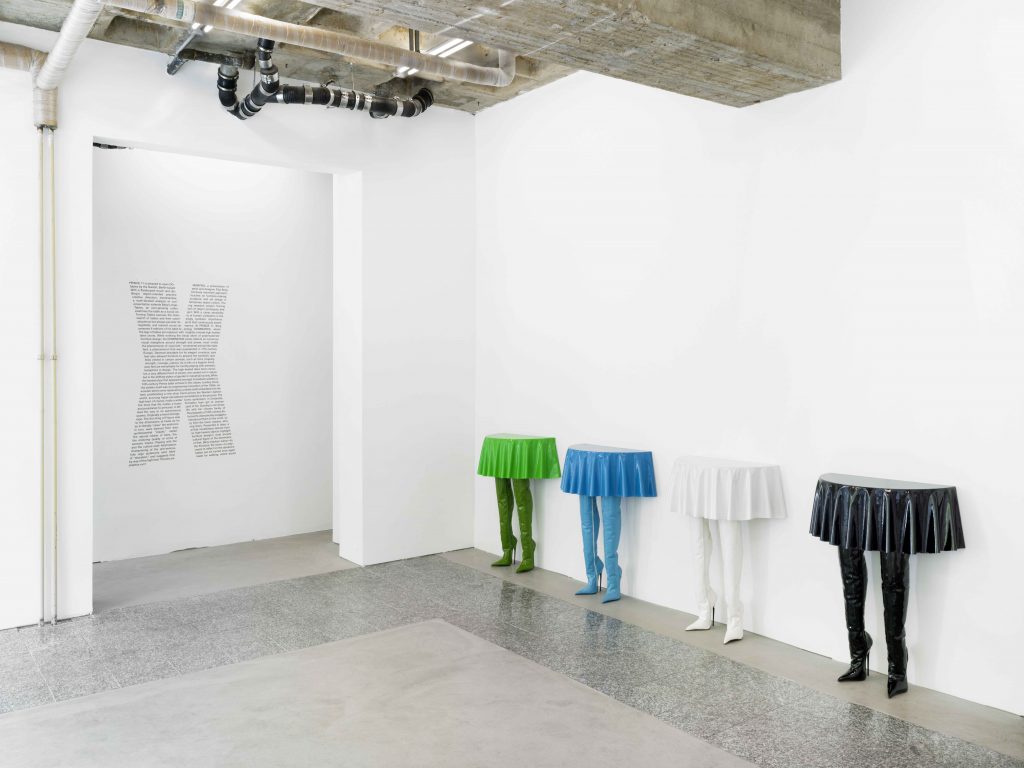
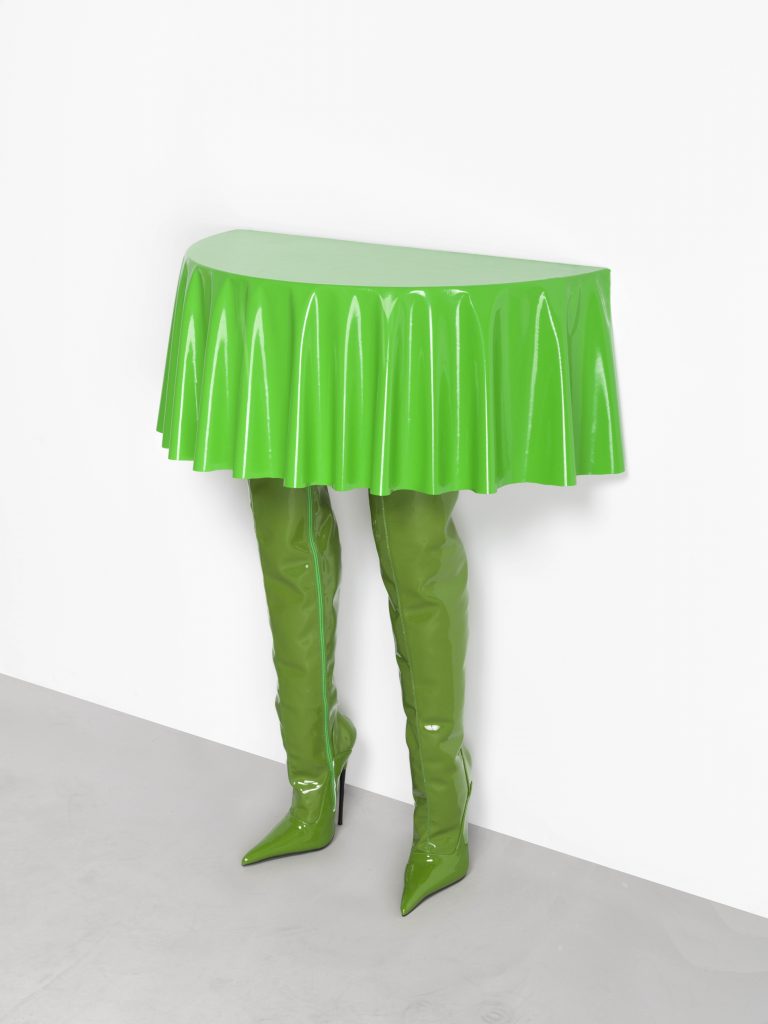
DOMINATRIX, 2022
Edition of 69 (8 color options, red, black, white, pink, gold, silver, blue, green)
Latex, patent leather, wood, polyurethane
90 x 70 x 35 cm
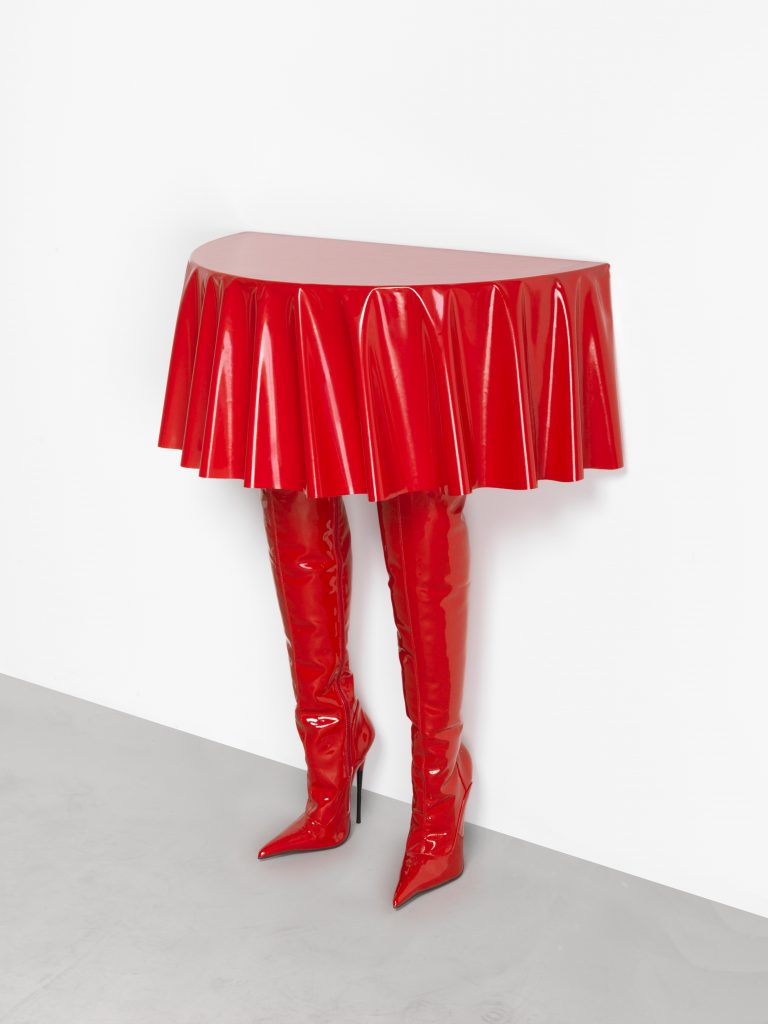
DOMINATRIX, 2022
Edition of 69 (8 color options, red, black, white, pink, gold, silver, blue, green)
Latex, patent leather, wood, polyurethane
90 x 70 x 35 cm
